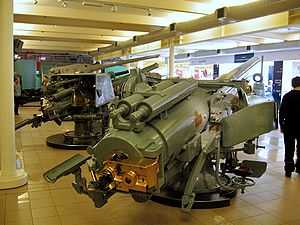HMS Chester (1915)
.jpg) | |
| Career (Greece) | |
|---|---|
| Name: | Lambros Katsonis |
| Namesake: | Lambros Katsonis |
| Builder: | Cammell Laird, Birkenhead, England |
| Laid down: | 7 October 1914 |
| Launched: | 8 December 1915 |
| Fate: | Sold to United Kingdom in 1915 |
| Career (United Kingdom) | |
| Name: | HMS Chester |
| Namesake: | Chester |
| Launched: | 8 December 1915 |
| Acquired: | 1915 |
| Commissioned: | May 1916 |
| Fate: | Sold for scrapping 9 November 1921 |
| General characteristics | |
| Class and type: | Town-class light cruiser |
| Displacement: | 5,185 tons |
| Length: | 456.5 ft (139.1 m) Overall |
| Beam: | 50 ft (15.2 m) |
| Draught: | 15.5 ft (4.7 m) |
| Propulsion: | Parsons compound re-action turbines Quadruple propellers Twelve Yarrow boilers 31,000 hp |
| Speed: | 26.5 knots (49.1 km/h) |
| Range: | carried 1172 tons fuel oil |
| Complement: | 402 |
| Armament: | 10 x BL 5.5 inch Mark I (140 mm) /50 guns on mountings CP Mk.I one 3 inch (76 mm) guns 21 inch (533 mm) torpedo tubes |
| Armour: | 2 inches (51 mm) belt 1.5 inches (38 mm) deck 4 inches (100 mm) conning tower |
HMS Chester was a Town-class light cruiser of the Royal Navy, and one of two ships forming the Birkenhead subtype. Along with her sister ship, Birkenhead, she was originally ordered for the Greek Navy in 1914 and was to be named Lambros Katsonis. The order was placed with Cammell Laird and production continued for the Greek account after the outbreak of the First World War in August 1914. In 1915, however, the two cruisers were purchased by the British government.
Design

The two Greek ships differed from standard British practice in several ways: the main armament consisted of the new 5.5 inch (140mm) Coventry Ordnance Works gun. This weapon was significantly lighter than the standard 6 inch gun and fired an 85 pounds (39 kg) shell rather than the 100 pounds (45 kg) shell of the 6 inch weapon. It therefore had a higher rate of fire with little loss in hitting power.[2] Chester adopted oil firing machinery which was novel practice for the Royal Navy at the time.
Service
.jpg)

The ship was laid down on 7 October 1914, launched on 8 December 1915 and entered service in May 1916, three weeks before the Battle of Jutland. At Jutland she fought as part of the 3rd Battle Cruiser Squadron and came under withering fire from German forces. She was hit by 17 150mm shells and suffered casualties of 29 men killed and 49 wounded; many of the wounded lost legs because the open backed gun-shields did not reach the deck and give adequate protection. Amongst the gun crew fatalities was 16 year old John Cornwell who received the Victoria Cross for his dedication to duty though mortally injured. Chester served with the 3rd Light Cruiser Squadron until the Armistice and was subsequently placed in reserve. She was offered for re-sale to Greece but the offer was declined and the ship was sold for scrapping on 9 November 1921 to Rees, of Llanelly. The gun served by Cornwell is preserved in the Imperial War Museum in London.[1]
Mount Chester in the Canadian Rockies was named after this ship, with nearby Mount Cornwell named after John Cornwell.[3]
Notes
- ↑ 1.0 1.1 Imperial War Museum (2012). "Naval BL 5.5 in Mk I Gun with Mk I pedestal mount". Imperial War Museum Collections Search. Retrieved 6 February 2012.
- ↑ Tony DiGiulian (2006-11-10). "British 5.5"/50 (14 cm) BL Mark I". NavWeaps: Naval Weapons, Naval Technology and Naval Reunions. Retrieved 2006-12-15.
- ↑ "Cornwell, Mount". BC Geographical Names.
References
- Colledge, J. J.; Warlow, Ben (2006) [1969]. Ships of the Royal Navy: The Complete Record of all Fighting Ships of the Royal Navy (Rev. ed.). London: Chatham Publishing. ISBN 978-1-86176-281-8. OCLC 67375475.
- Jane's Fighting Ships of World War One (1919), Jane's Publishing Company
- Ships of the Birkenhead group
- Conway's All the World's Fighting ships 1906-1922
- DK Brown. The Grand Fleet, Warship Design and Development 1906-1922, Chatham Publishing 1999
External links
| Wikimedia Commons has media related to HMS Chester (ship, 1915). |
| ||||||||||||||||||||||||||||||||||||||||||||||||||||||||